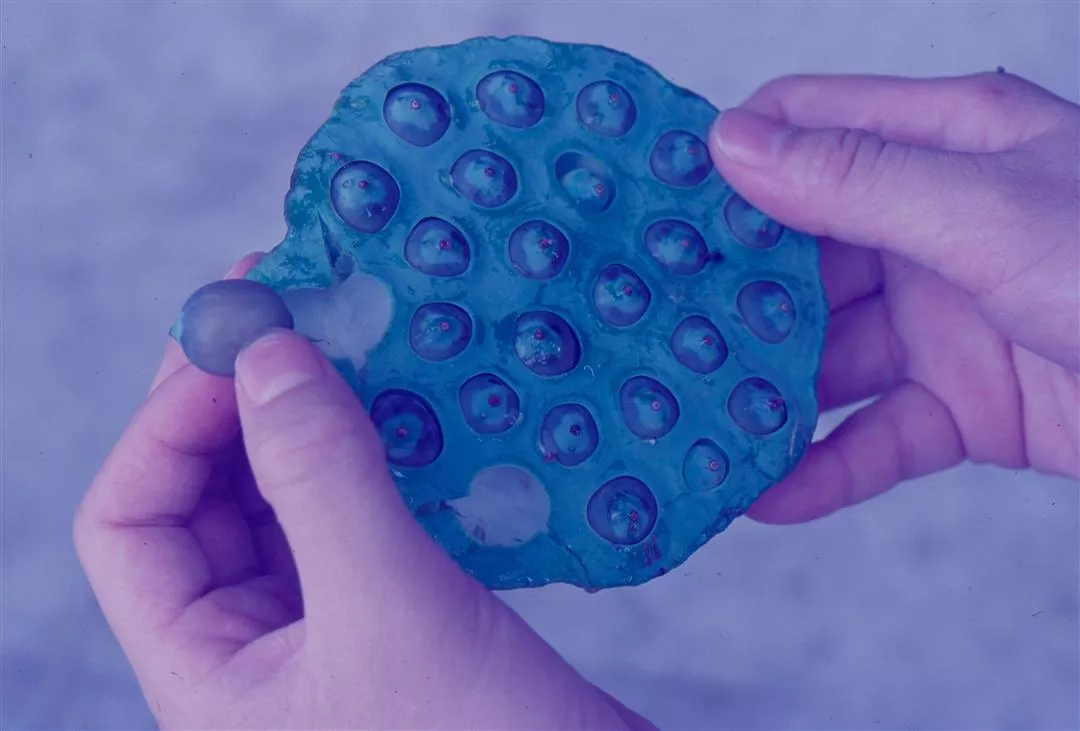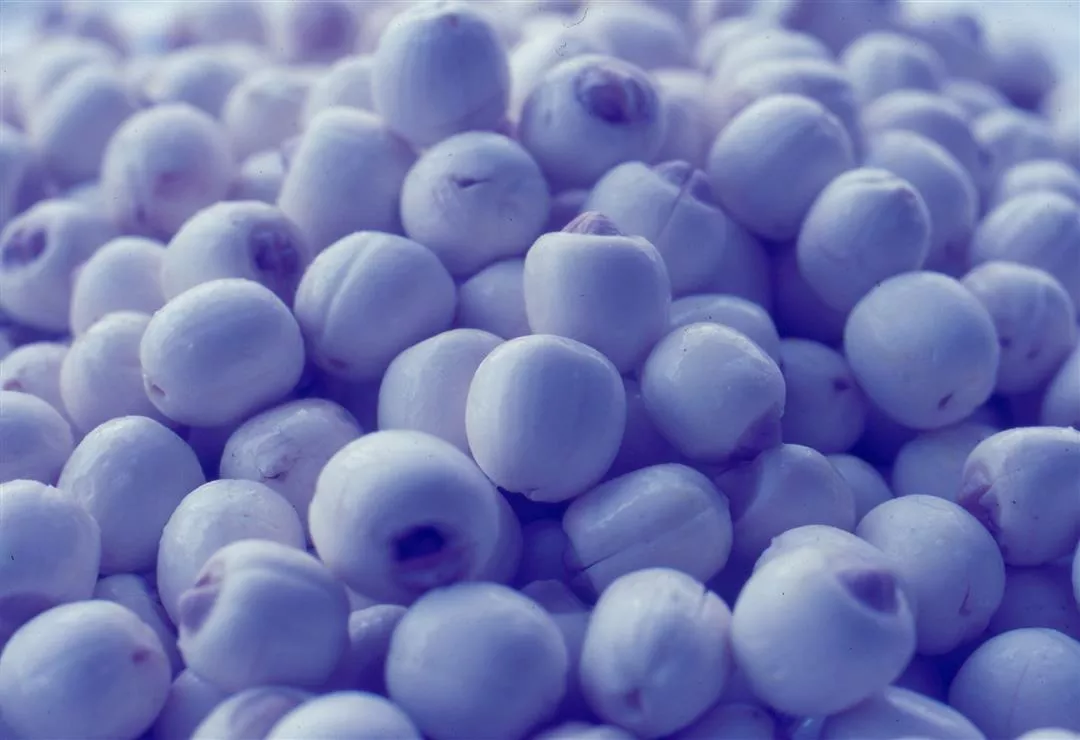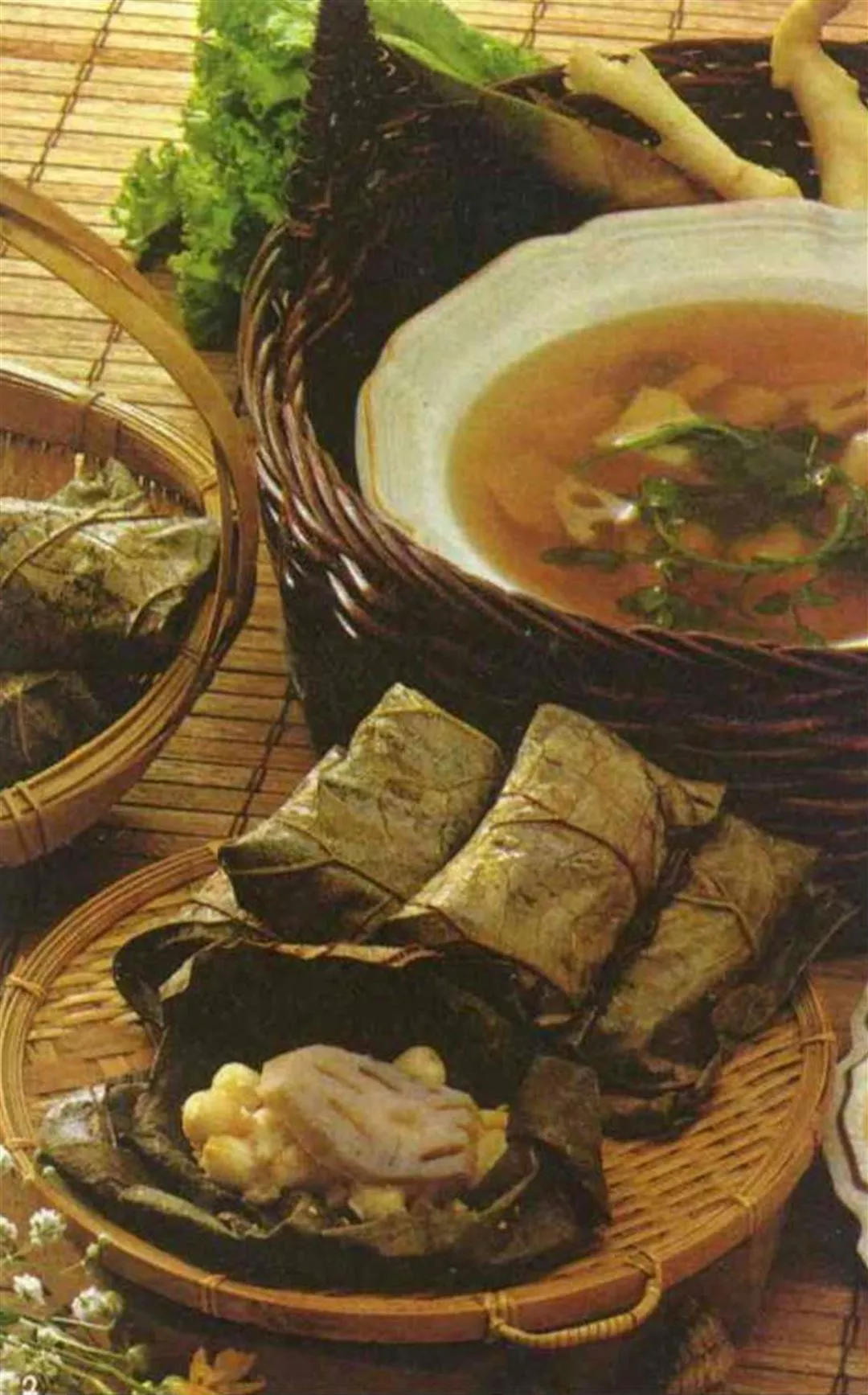The advent of summer's heat brings forth the delicate bloom of the lotus flower. Growing in profusion in garden ponds, the emerald greens of its spreading leaves floating on the shimmering waters creates a scene suggestive of the classical beauty of a young maiden.
Long the source for artistic, religious and social inspiration, the lotus plant is an apt symbol of the Oriental world.
Some initial confusion surrounds the name of this plant. Today the Chinese refer to it both as the Ho and Lien plants. In ancient China the lotus was called the Fu ch'u, while the leaves were referred to as the Ho and cupule was the Lien. Less complicated than Fu Ch'u, people then referred to the whole plant as Ho during the summer and Lien during the autumn. Therefore, the lotus is really the same plant with two different seasonal appellations.
Native to tropical and warm weather regions of Asia, the lotus has taken on deep symbolic meanings in various countries. In India for example, it has been regarded with great respect. The plant takes root in a muddy environment yet grows up pure and beautiful just as the Bodhisattva did on earth. Statues and paintings of the benevolent Buddha usually have him seated cross-legged on a seat called the lotus platform. Monks' robes are called "lotus robes." In ancient India the lotus was the embodiment of female serenity and symbolic of eternal reproduction.
In Japan, the lotus had a somewhat more somber significance. It was associated with death and became a standard offering at funeral services. Lotus plants also had a spiritual connotation as well.
It is in China, however, that the lotus has made its deepest impression. Introduced with the spread of Buddhism in China, the lotus soon took on different symbolic meanings. Female beauty, held in high esteem in the court of imperial China found a poetic metaphor in the guise of the delicate lotus blossom. Many popular idioms using the lotus as the subject have become common in the Chinese language. One such idiom compares the lotus root to a relationship that has broken up. The plant, because of its fibrous nature can't be totally cut, just as the feelings of the two lovers can't completely be severed.
The lotus grows best in the warm, moist regions of eastern and south China, especially in Kiangsu province in the area from T'ai Hu to Kaoyu Hu. Many pieces of descriptive poetry have captured the visual magic of this land of fragrant blossoms.
Another important symbolic concept captured by the lotus is the idea of Chun Tze or the "gentleman." Chou Tun-yi a Sung dynasty (960-1279AD) writer expounded on this concept in his narrative of "Lotus Love." He metaphorically explained that a "gentleman" should be like the lotus, growing pure in a muddy environment, its hollow stem growing straight and having no branches or offshoots. Thus a gentleman should likewise exemplify these noble qualities. Through such presentations of these concepts the lotus became known as the "gentleman" of plants.
Artistically the lotus has long been a favorite subject of Chinese painters, especially contemporary masters like the late Chang Ta-ch'ien, Chang Chieh and Ch'i Pai-shih. They have taken the lotus plant and given it recognition in paints and inks. In various styles and forms, from the straight form of realism to the abstract expressionism of p'omo(splashing inks)--the lotus is recorded in all its growth stages, thus giving it immortality.
Today on Taiwan the best place for the interested to get a visual appreciation of the lotus is at the lovely Taipei Botanical Gardens, located on the grounds of the History Museum. During the summer months crowds stroll the garden walkways admiring the classical beauty of the lotus blossom.
Not only is the lotus blossom prized for its artistic value, it is a rich source of food and medicinal products as well. Commercial growing ventures are carried out in Tainan County at Paiho town. First planted during the late winter/early spring period (March), the mature plant is harvested anytime after the Dragon Boat Festival, which usually falls in mid to late June. The harvest then continues throughout the summer and lasts into September. The plant can be totally utilized, from the root to the leaves. The P'eng or cupule of the flower yields a concentric seed plate which contains upwards of 24 capsular seeds. These are forcibly removed by hand. The seed must then be shelled and the small embryonic shoot removed. The processed seed can be used in a variety of delicious culinary treats. One of its most popular uses is in the making of a cooling, chilled summertime soup. This refrigerated delight is believed by many to have medicinal value. A popular lotus-seed filling moon-cake is widely enjoyed by young and old during the Mid-Autumn Festival. The seeds are crushed and used in the tasty filling.
The leaves of the lotus plant are also versatile in use. Pork ribs wrapped and then steamed in the lotus leaf is a delectable dish enjoying wide-spread popularity.
The root or "Ou" as it is known in Chinese has the greatest number of culinary uses. Eaten raw, it is an appetizing snack treat. Its subtle flavor enhances soups and stews, and chopped and stir-fried with other vegetables such as carrots and mushrooms--it is simply delicious. Another dish calls to slice the jointed root into cross-slices. A meat filling is then stuffed or spread between two section slices. These are either fried or steamed, and flavored with the addition of honey or salt. The root is also processed into a starchy flour which is mixed with boiling water to produce a popular cure for stomach and intestinal disorders. Other medicinal properties attributed to the lotus plant are the ability to aid in the cure of colds, fevers and bleeding.
A symbol of beauty, an expression of romantic love, a powerful religious emblem--these are all qualities embodied by the lotus flower. As it greets each spring with new life, the lotus is truly the quintessential expression of Chinese feeling and culture.
(Gerald Hatherly)
[Picture Caption]
1. An intriguing shot--a dragonfly alights on an immature lotus leaf. 2. The early morning dew drops dapple this white lotus flower. 3. As the petals of the lotus flower spread, the exposed cupule grows.
1.3. The cupule contains the delicious lotus seed. The outer seed shell must be removed before it can be eaten. 2.4.5. The seed, the seed heart and the cupule are dried and used as Chinese medicine. They are claimed to have curative powers. 6. After processing, the fresh lotus seed is ready to sell.
The seed and root of the lotus can be used in the preparation of delicious and nutritious dishes. 1. Two sweet soups, on the right a soup of lotus seed, longan fruit and red date and on the left, one from lotus root and red date. 2. Lotus root and seeds wrapped in the lotus leaves and steamed is a popular dish. 3. Sliced fresh lotus root. 4. Lotus root and pork rib soup. 5. Chiang Mi lotus root--a traditional snack combining rice and the lotus root. 6. The plump, white, jointed lotus root.

The Many Faces of the Lovely Lotus.

1. An intriguing shot--a dragonfly alights on an immature lotus leaf.

2. The early morning dew drops dapple this white lotus flower.

3. As the petals of the lotus flower spread, the exposed cupule grows.

1.3. The cupule contains the delicious lotus seed. The outer seed shell must be removed before it can be eaten.

2.4.5. The seed, the seed heart and the cupule are dried and used as Chinese medicine. They are claimed to have curative powers.

1.3. The cupule contains the delicious lotus seed. The outer seed shell must be removed before it can be eaten.

2.4.5. The seed, the seed heart and the cupule are dried and used as Chinese medicine. They are claimed to have curative powers.

2.4.5. The seed, the seed heart and the cupule are dried and used as Chinese medicine. They are claimed to have curative powers.

6. After processing, the fresh lotus seed is ready to sell.

The seed and root of the lotus can be used in the preparation of delicious and nutritious dishes. 1. Two sweet soups, on the right a soup of lotus seed, longan fruit and red date and on the left, one from lotus root and red date.

2. Lotus root and seeds wrapped in the lotus leaves and steamed is a popular dish.

3. Sliced fresh lotus root.

4. Lotus root and pork rib soup.

5. Chiang Mi lotus root--a traditional snack combining rice and the lotus root.

6. The plump, white, jointed lotus root.